
Elephant
What kind of animal is Elephant?
Example of the color palette for the image of Elephant
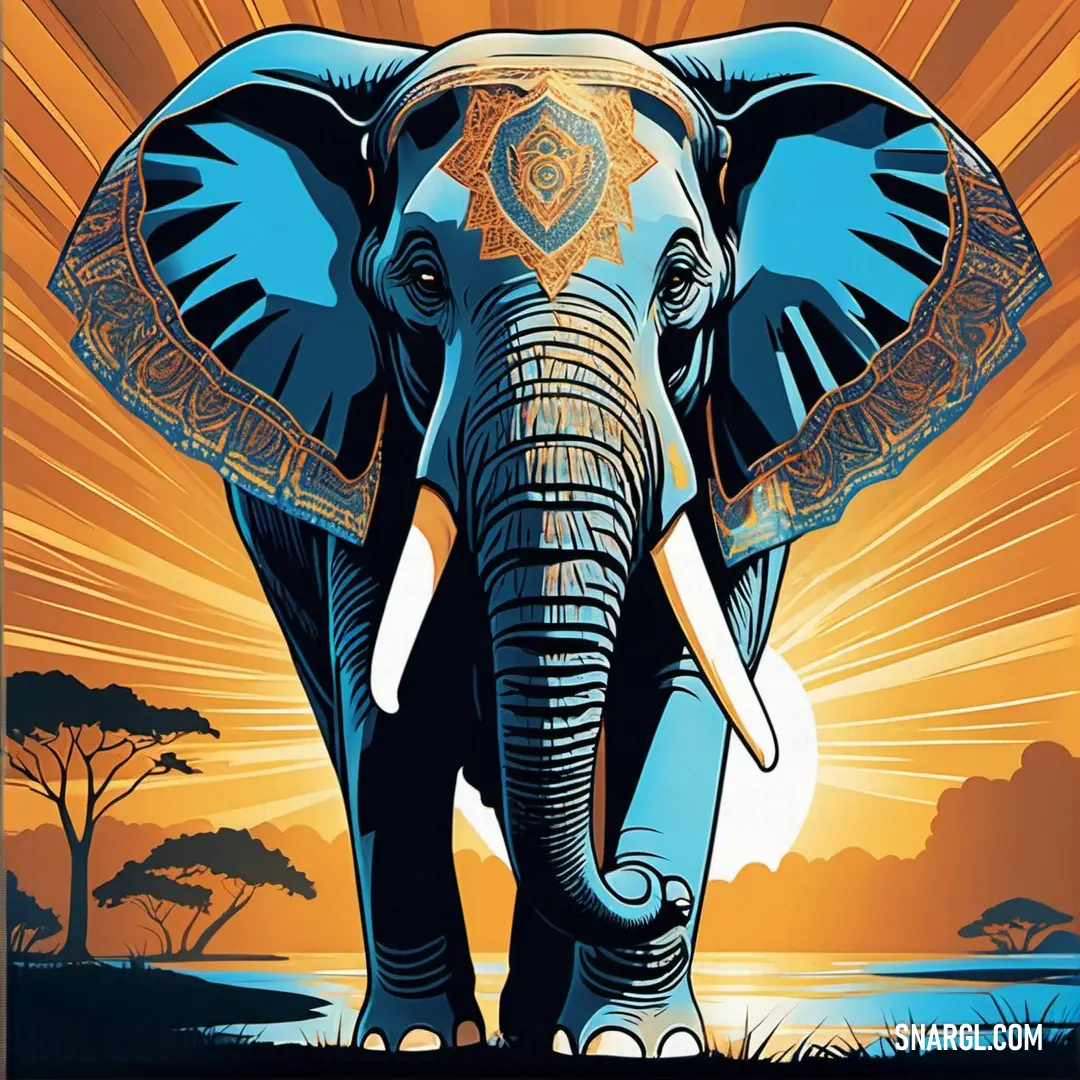
See these colors in NCS, PANTONE, RAL palettes...
What is the animal Elephant known for?
Here are some of the most remarkable facts about elephants:
Elephants are the largest land animals in the world.
Elephants have a long and flexible trunk that has more than 150,000 muscles and tendons.
Elephants have large ears that help them regulate their body temperature.
They can flap their ears to cool themselves down.Elephants have tusks that are actually enlarged incisor teeth.
They use their tusks for feeding, digging, fighting, and defending themselves.
Unfortunately, their tusks also make them a target for poachers who want to sell their ivory.Elephants have a very large and complex brain that weighs about 5 kg.
They are very intelligent and have excellent memory.Elephants are herbivores that eat a lot of plant matter.
They can consume up to 300 kg of food and 40 liters of water per day.Elephants are social animals that live in groups called herds.
The herds are usually led by a female called the matriarch.Elephants communicate with each other through a variety of sounds, gestures, touches, and smells.
Elephants have a long lifespan that can reach up to 70 years in the wild.
They can reproduce until they are about 50 years old and have a gestation period of 22 months, the longest of any mammal.Elephants are endangered animals that face many threats from humans.
They are hunted for their ivory, meat, and skin, and their habitats are destroyed by deforestation, agriculture, and mining.
Example of the color palette for the image of Elephant
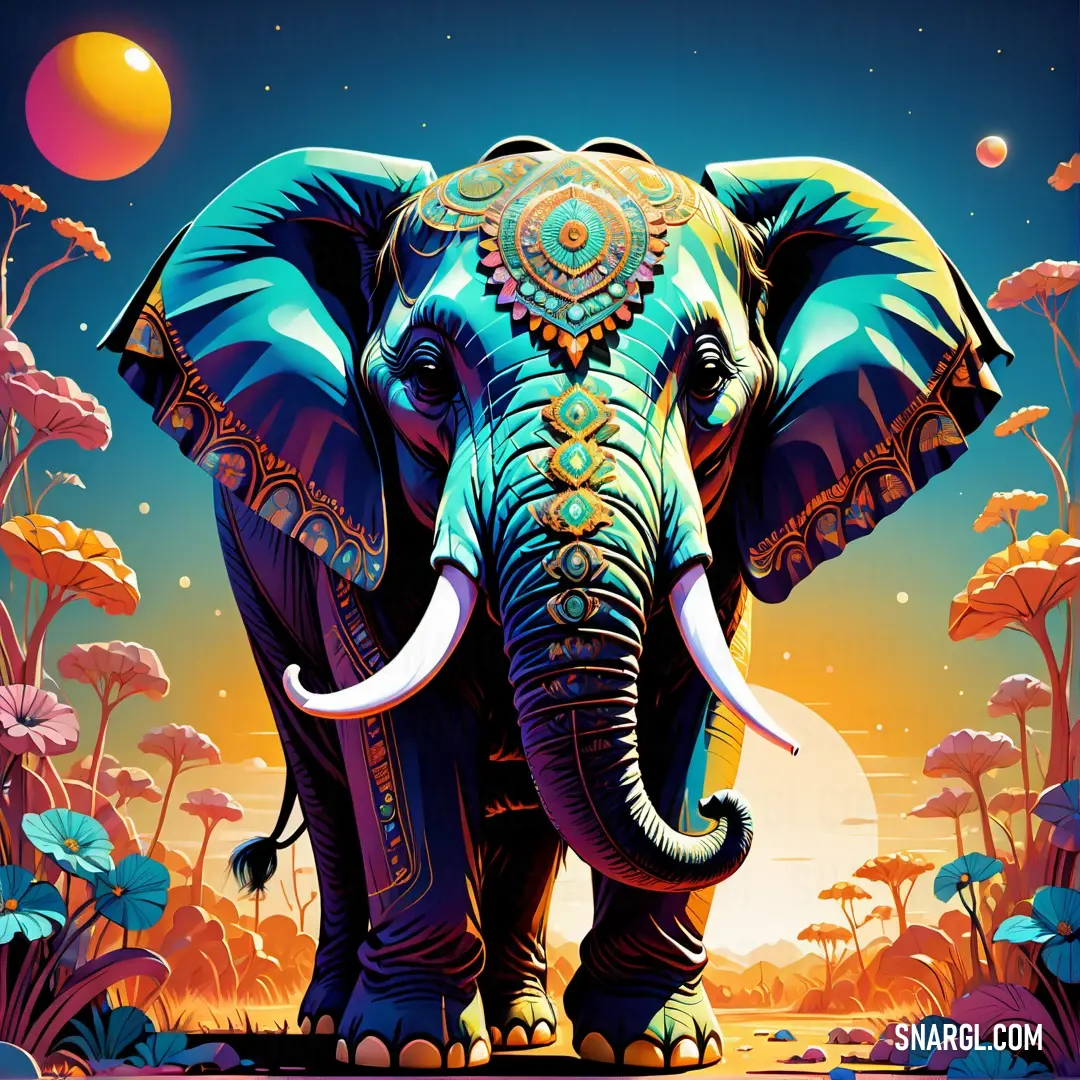
See these colors in NCS, PANTONE, RAL palettes...
Where does the Elephant live?
Elephants are large herbivorous mammals that live in different regions of Africa and Asia.
They need a lot of space and food to survive, so they often migrate to find water and vegetation.
Elephants can adapt to various habitats, such as savannas, forests, deserts, and marshes.
There are two main species of elephants: African and Asian.
African elephants have larger ears and tusks, and can be divided into two subspecies: forest elephants and savanna elephants.
Forest elephants live in the dense tropical forests of western and central Africa, while savanna elephants live in the open grasslands and woodlands of eastern and southern Africa.
Asian elephants have smaller ears and tusks, and can be divided into three subspecies: Indian, Sumatran, and Sri Lankan.
Indian elephants live in the forests and grasslands of South Asia, from India to Vietnam.
Sumatran elephants live only on the island of Sumatra in Indonesia.
Sri Lankan elephants live in the southwestern part of Sri Lanka.
Example of the color palette for the image of Elephant
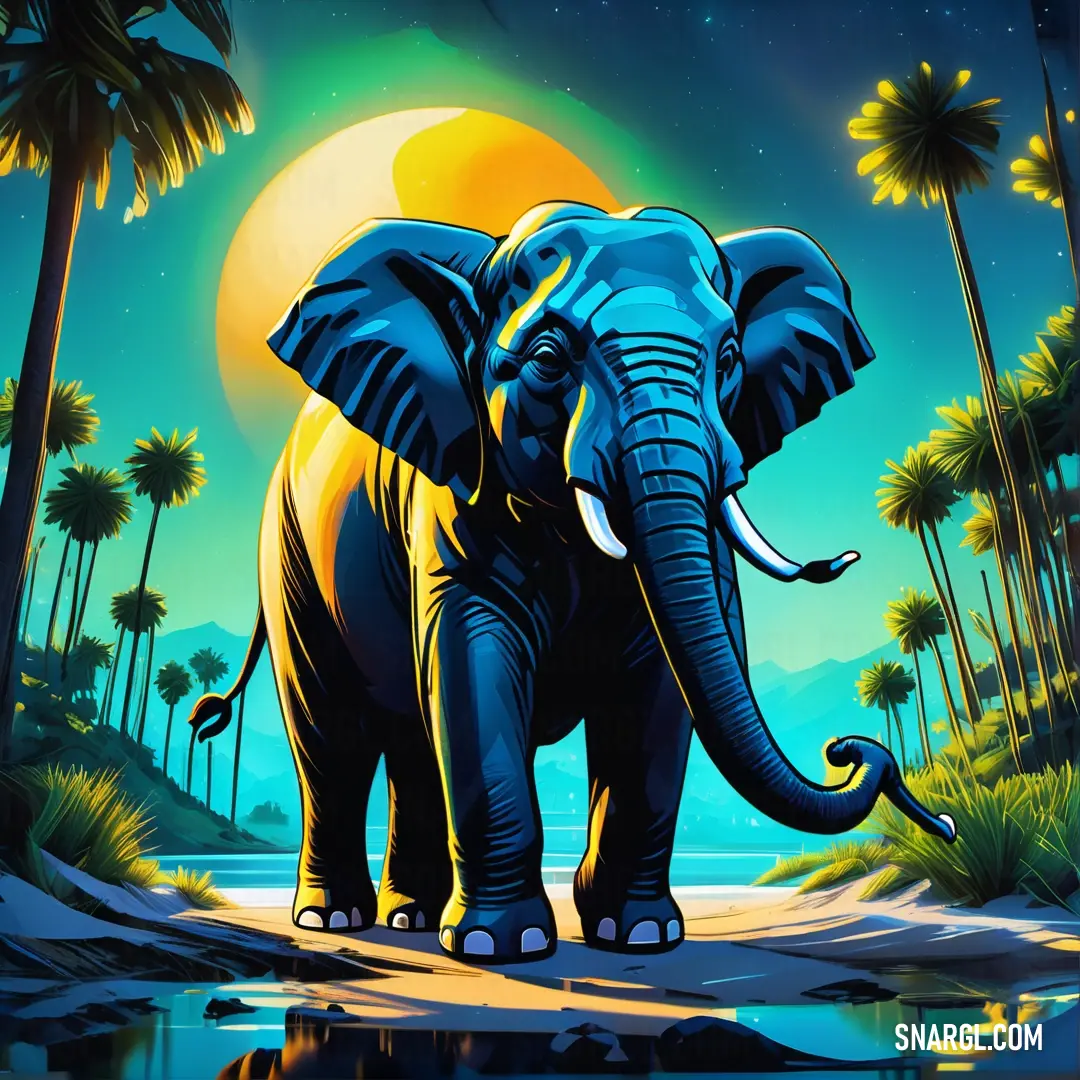
See these colors in NCS, PANTONE, RAL palettes...
What does the Elephant look like?
An elephant is a large grey animal with a long nose called a trunk, big ears, and white tusks.
It is the biggest living land mammal in the world.
There are three different species of elephant: the African savanna elephant, the African forest elephant, and the Asian elephant.
They have some physical differences, such as the size and shape of their ears, backs, and tusks.
Elephants are herbivorous and live in different habitats, such as savannahs, forests, deserts, and marshes.
They are very intelligent and social animals that communicate by touch, sight, smell, and sound.
Elephants are endangered due to poaching, habitat loss, and human-elephant conflict.
Example of the color palette for the image of Elephant
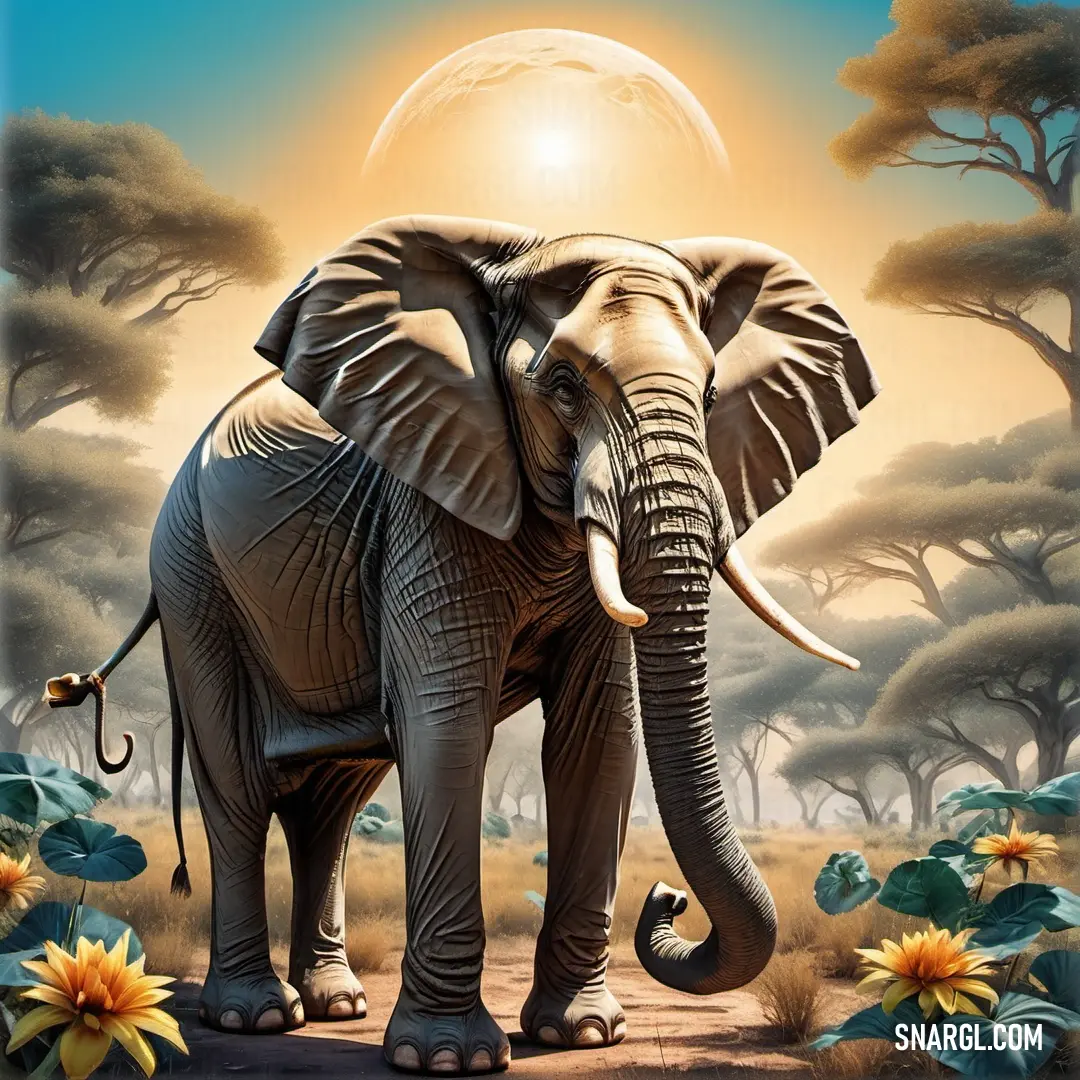
See these colors in NCS, PANTONE, RAL palettes...

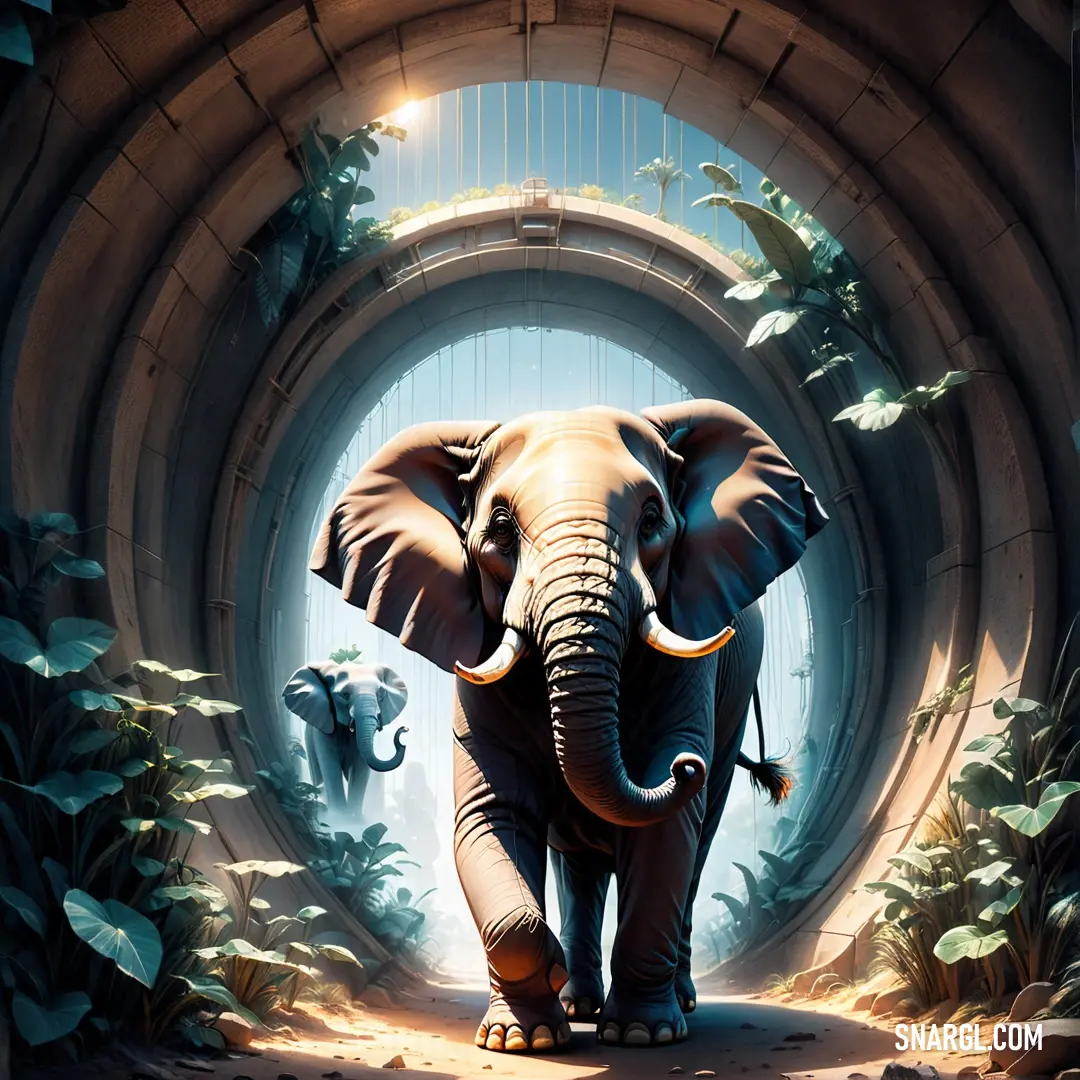
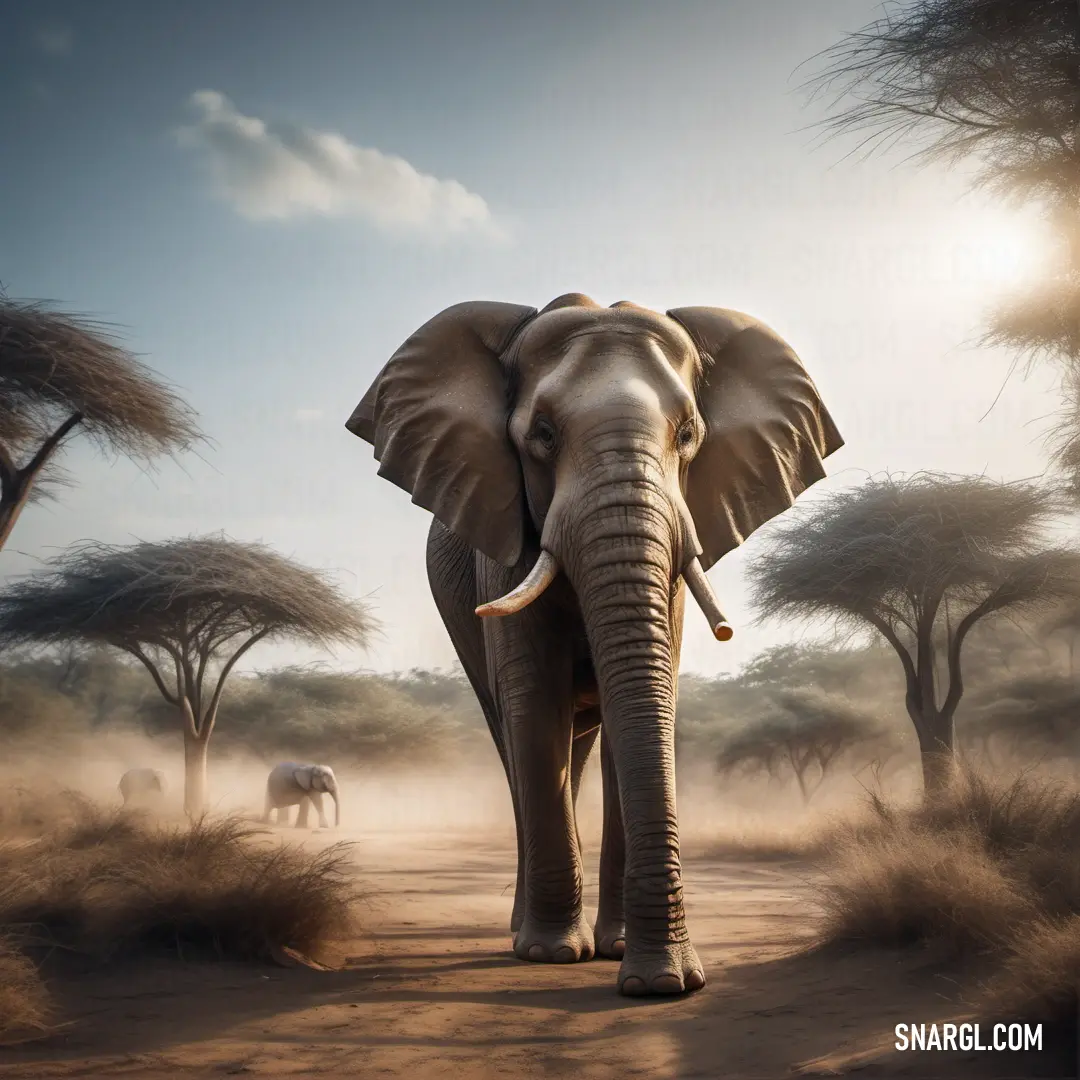
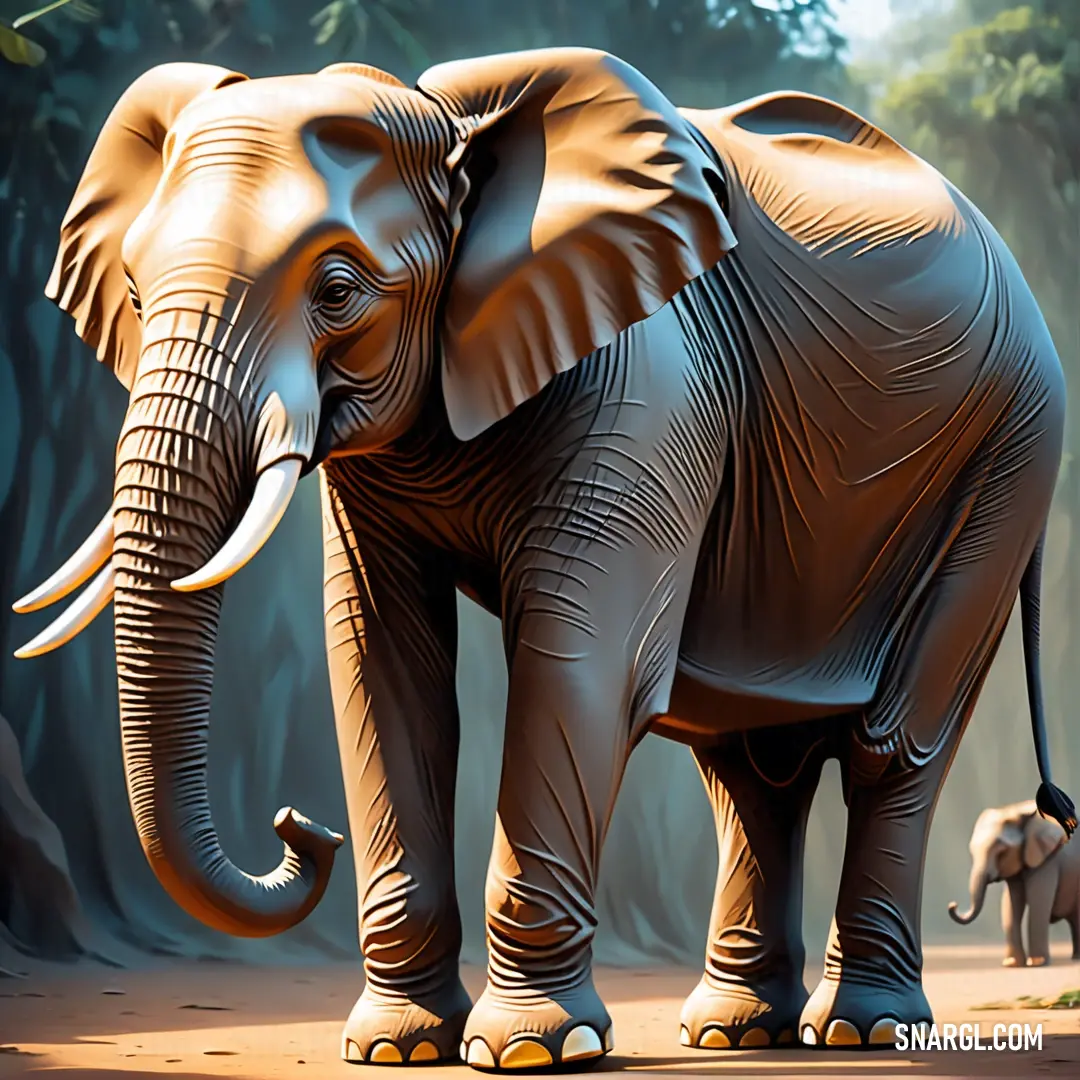
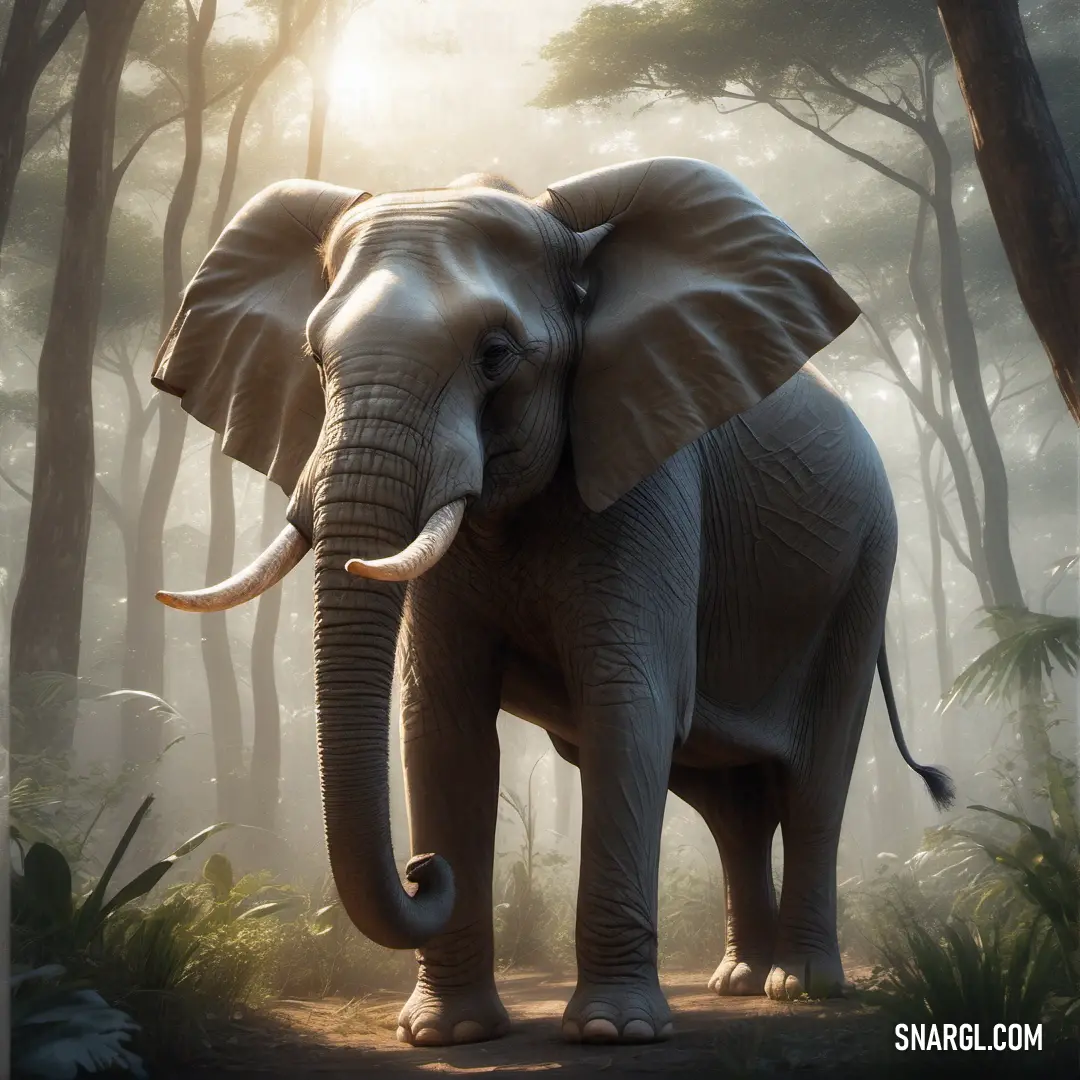
 Smoky black
Smoky black Khaki
Khaki Dark midnight blue
Dark midnight blue Tiger eye
Tiger eye Pale robin egg blue
Pale robin egg blue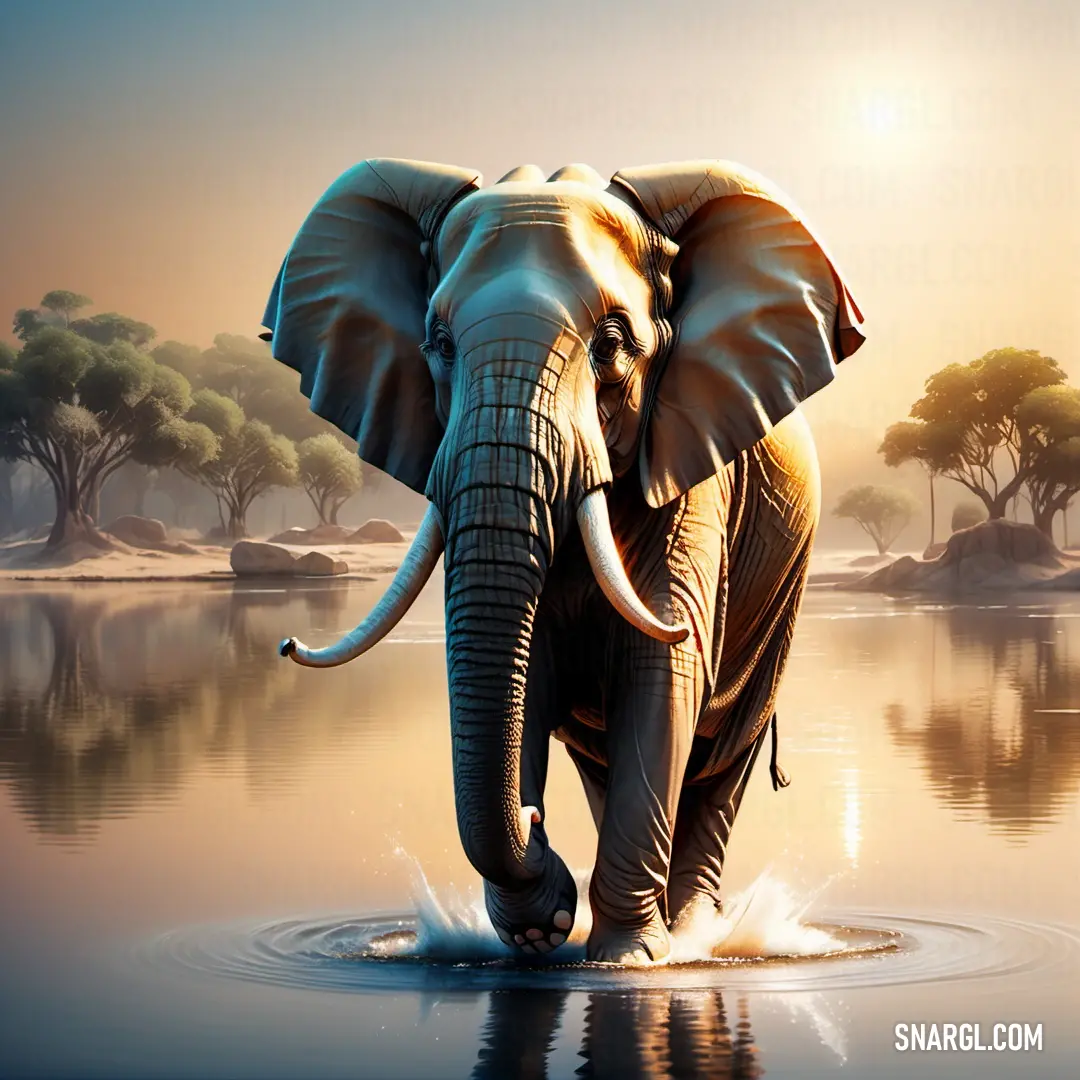
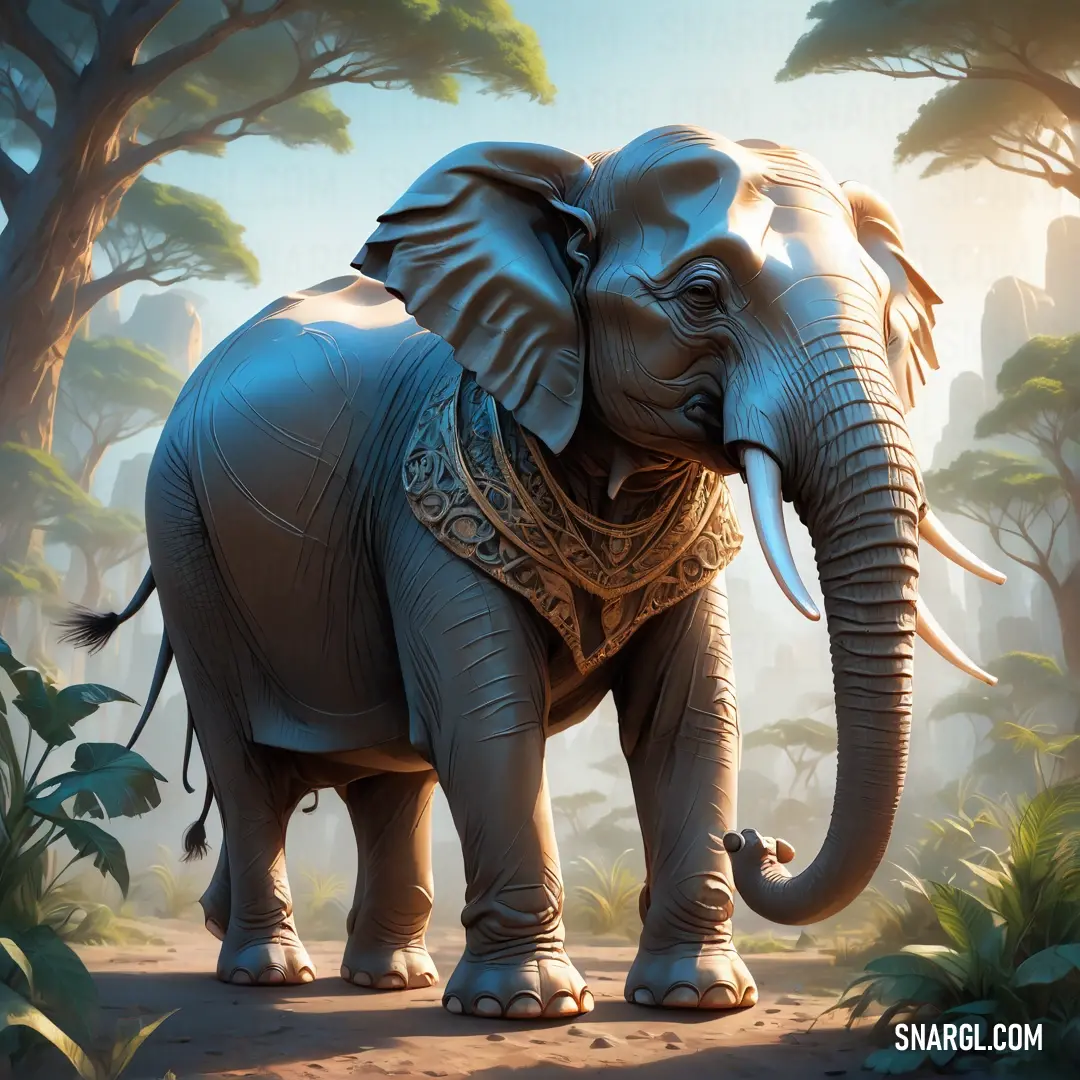

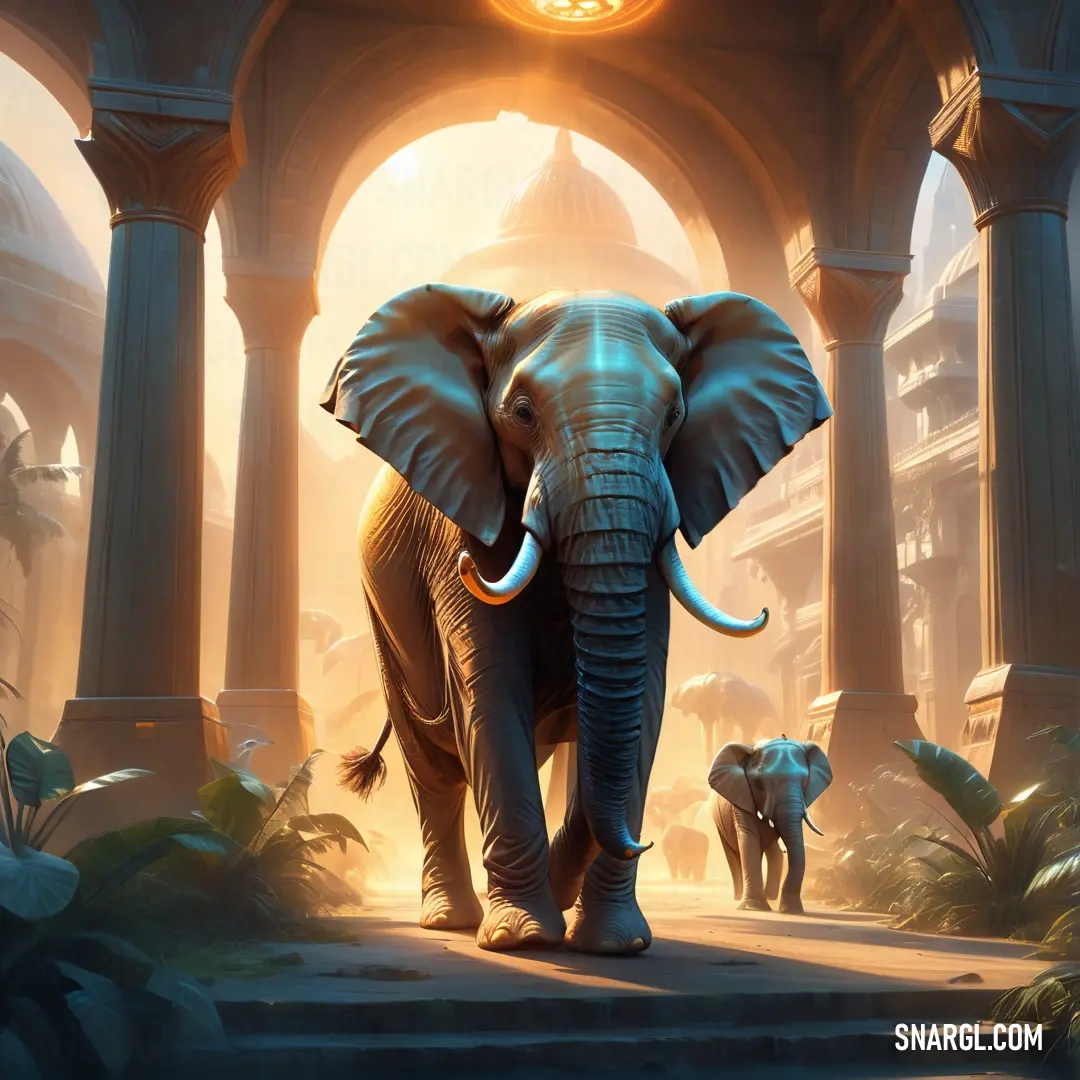
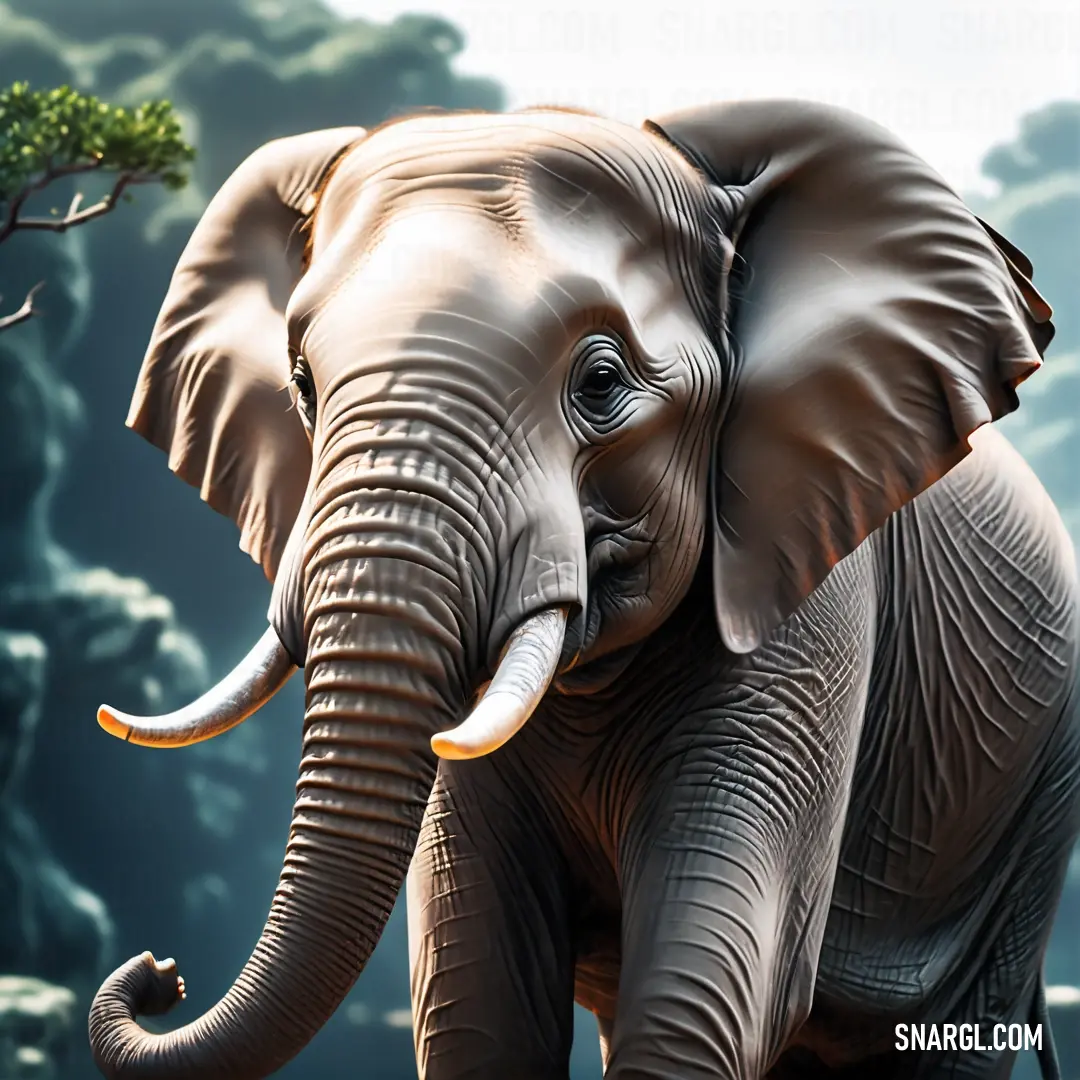
 Robin egg blue
Robin egg blue Meat brown
Meat brown Antique White
Antique White Pansy purple
Pansy purple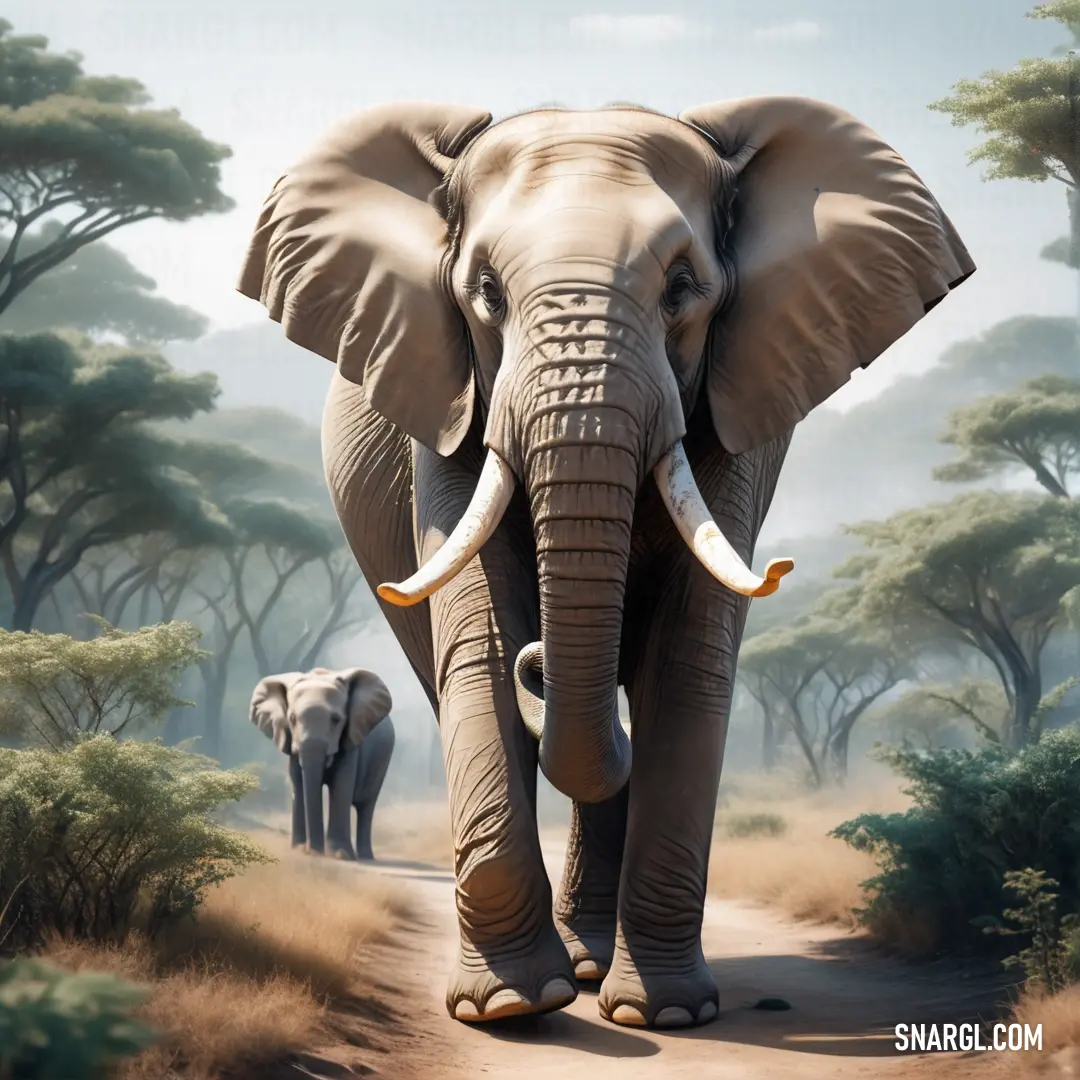
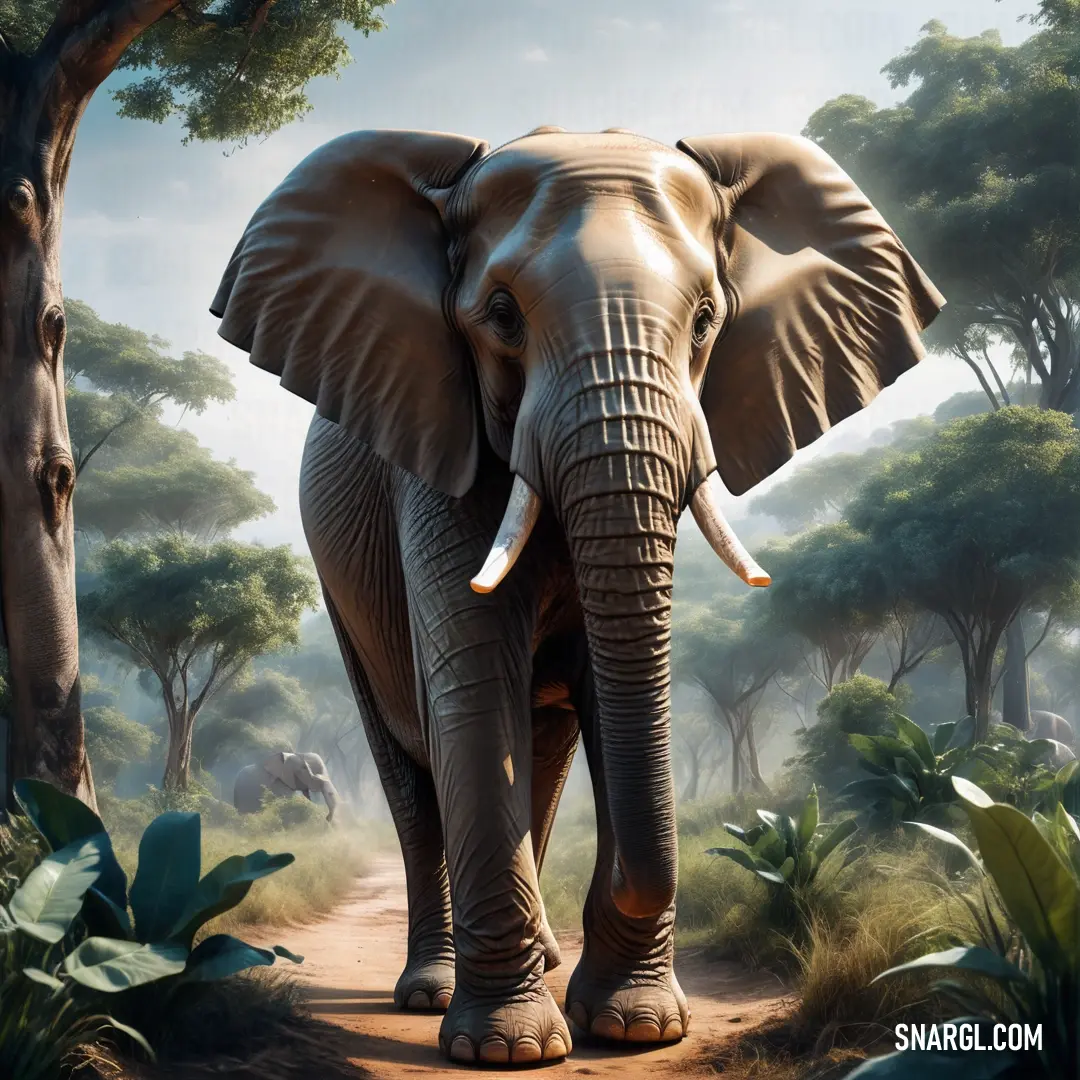
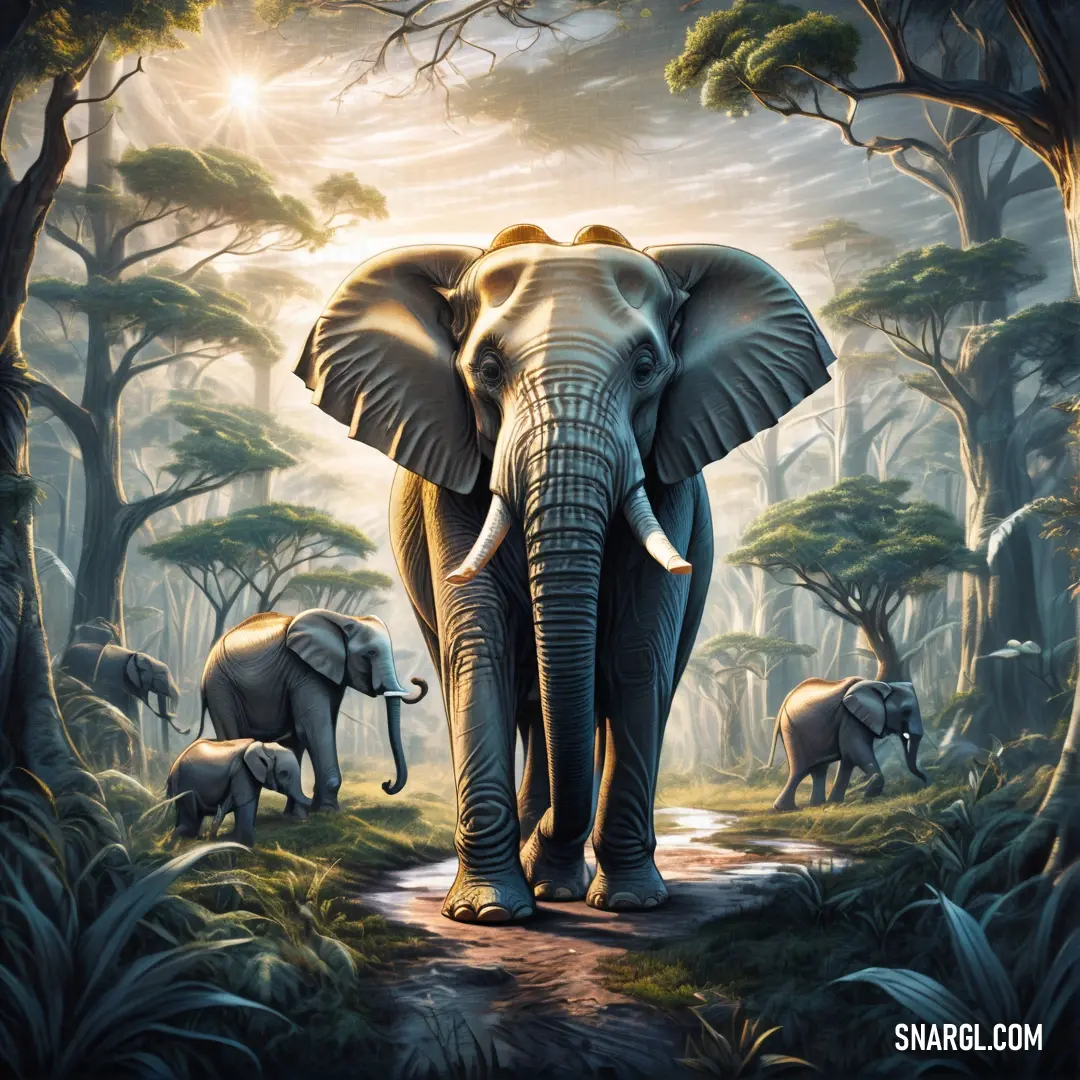
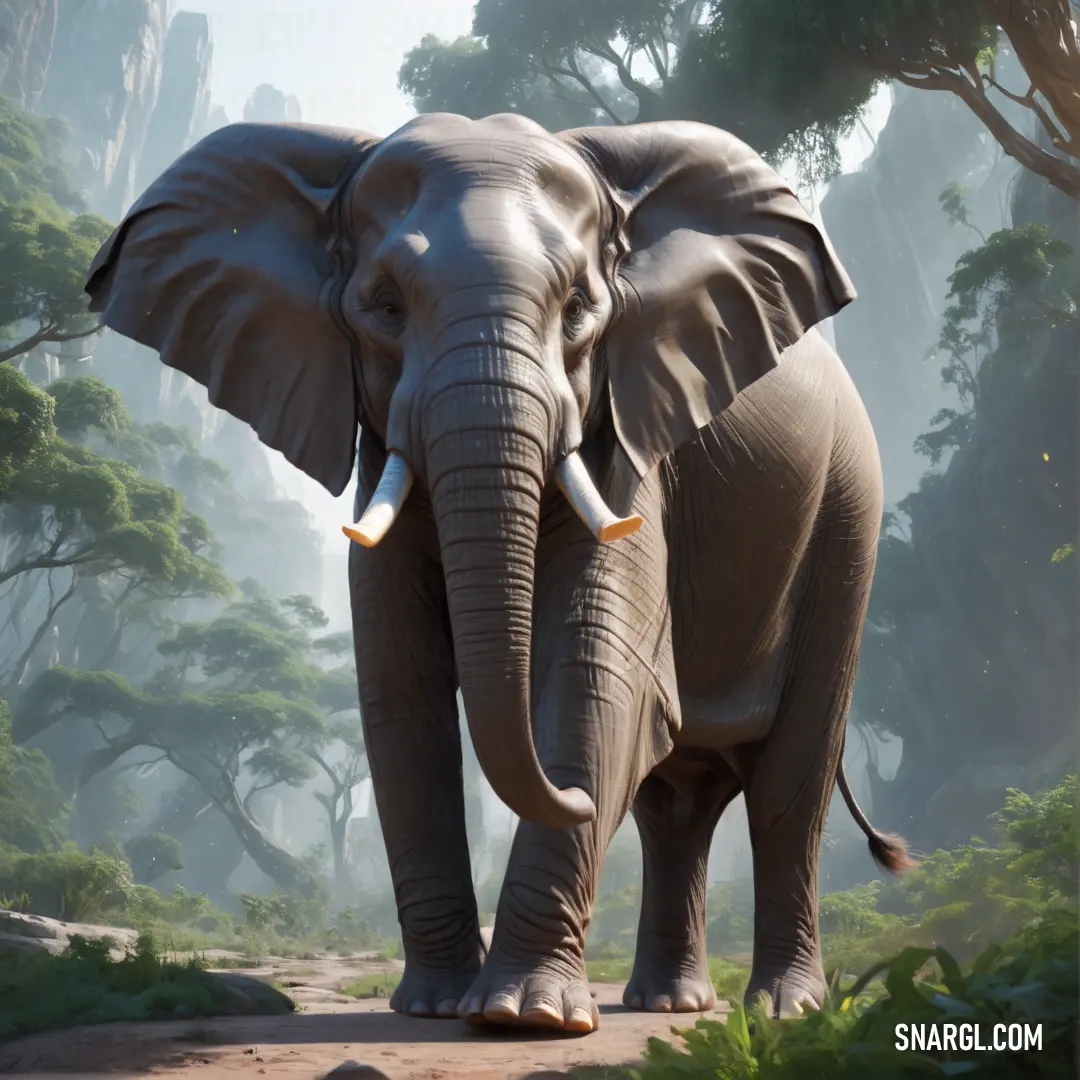
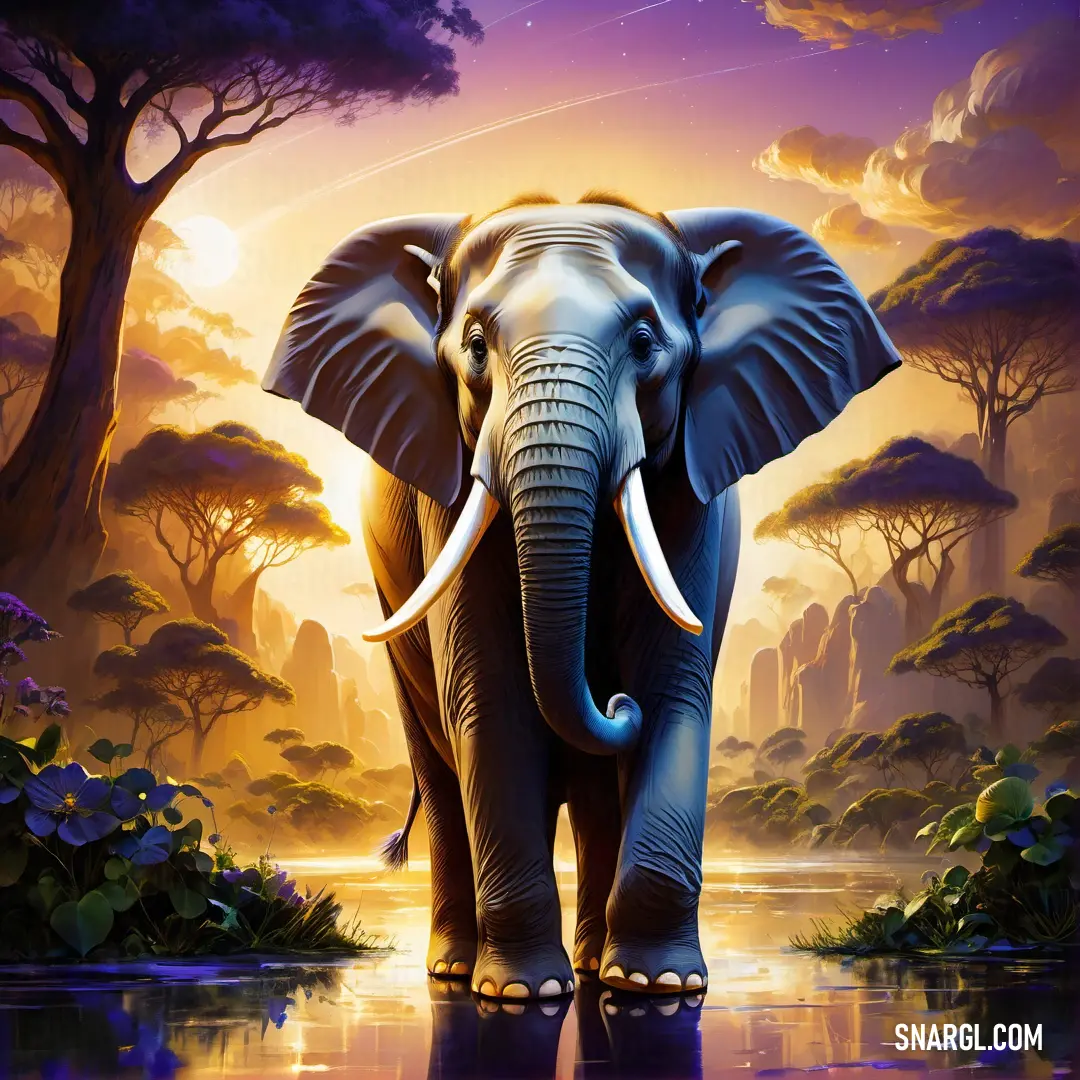
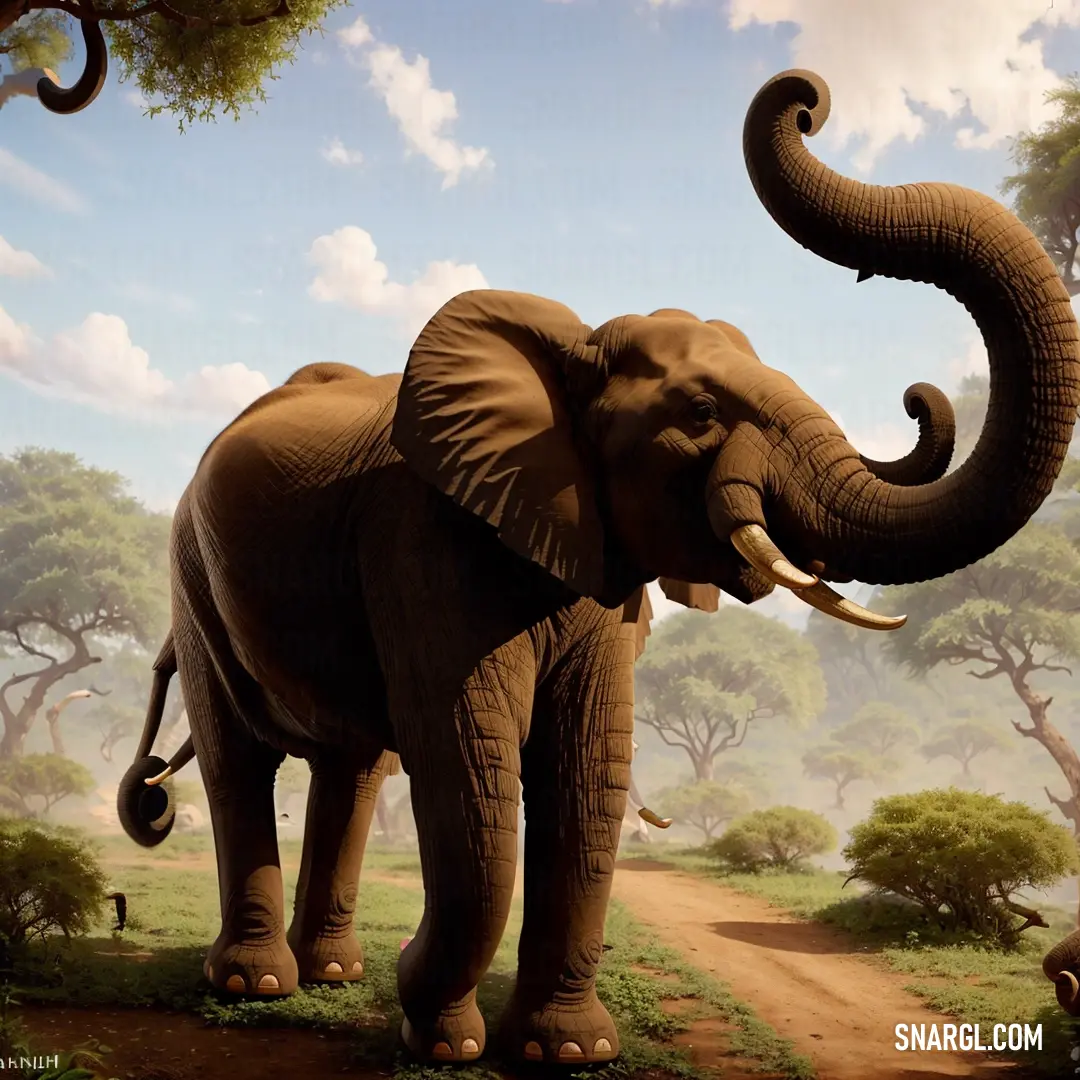
 Onyx
Onyx Medium turquoise
Medium turquoise Mustard
Mustard Medium Persian blue
Medium Persian blue Asparagus
Asparagus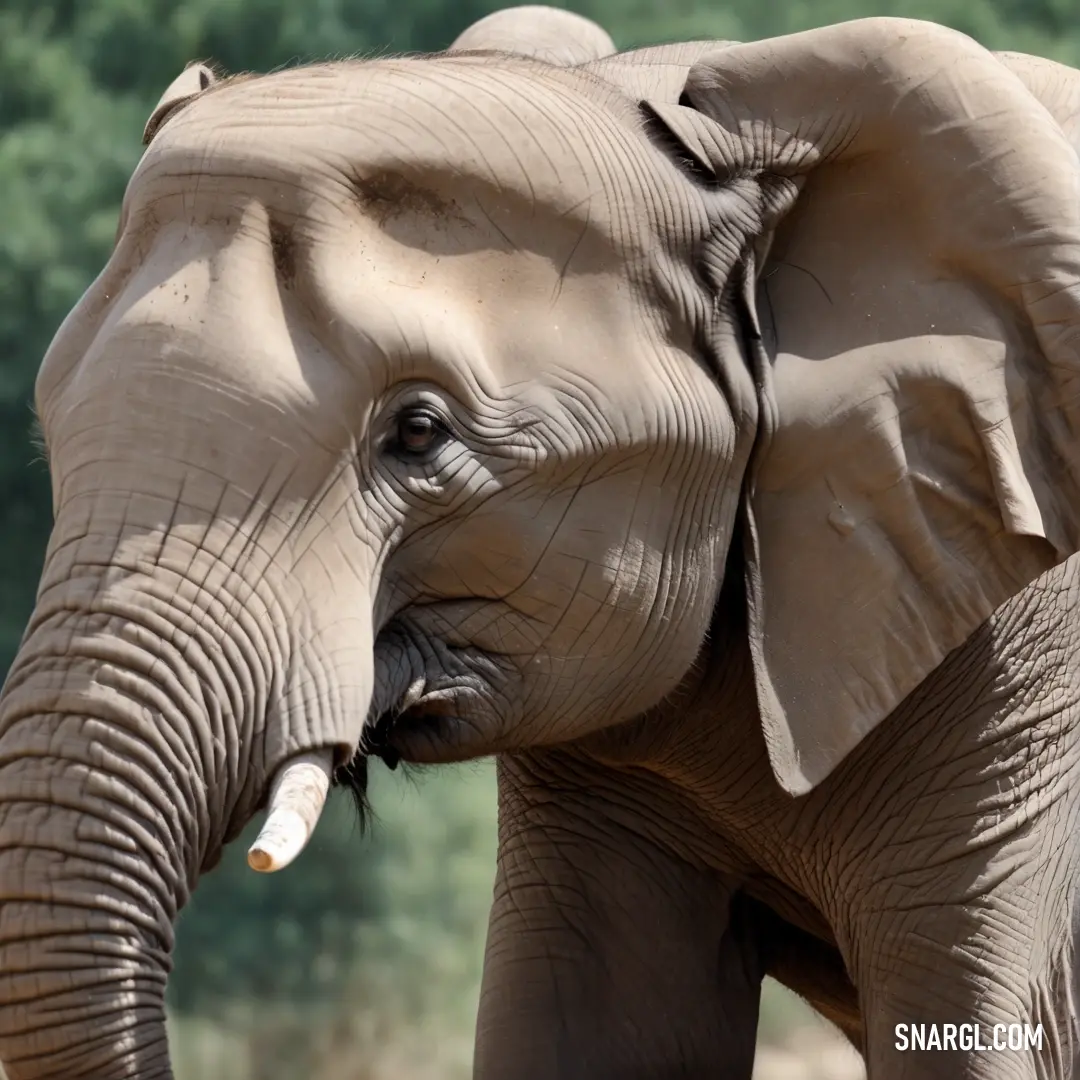
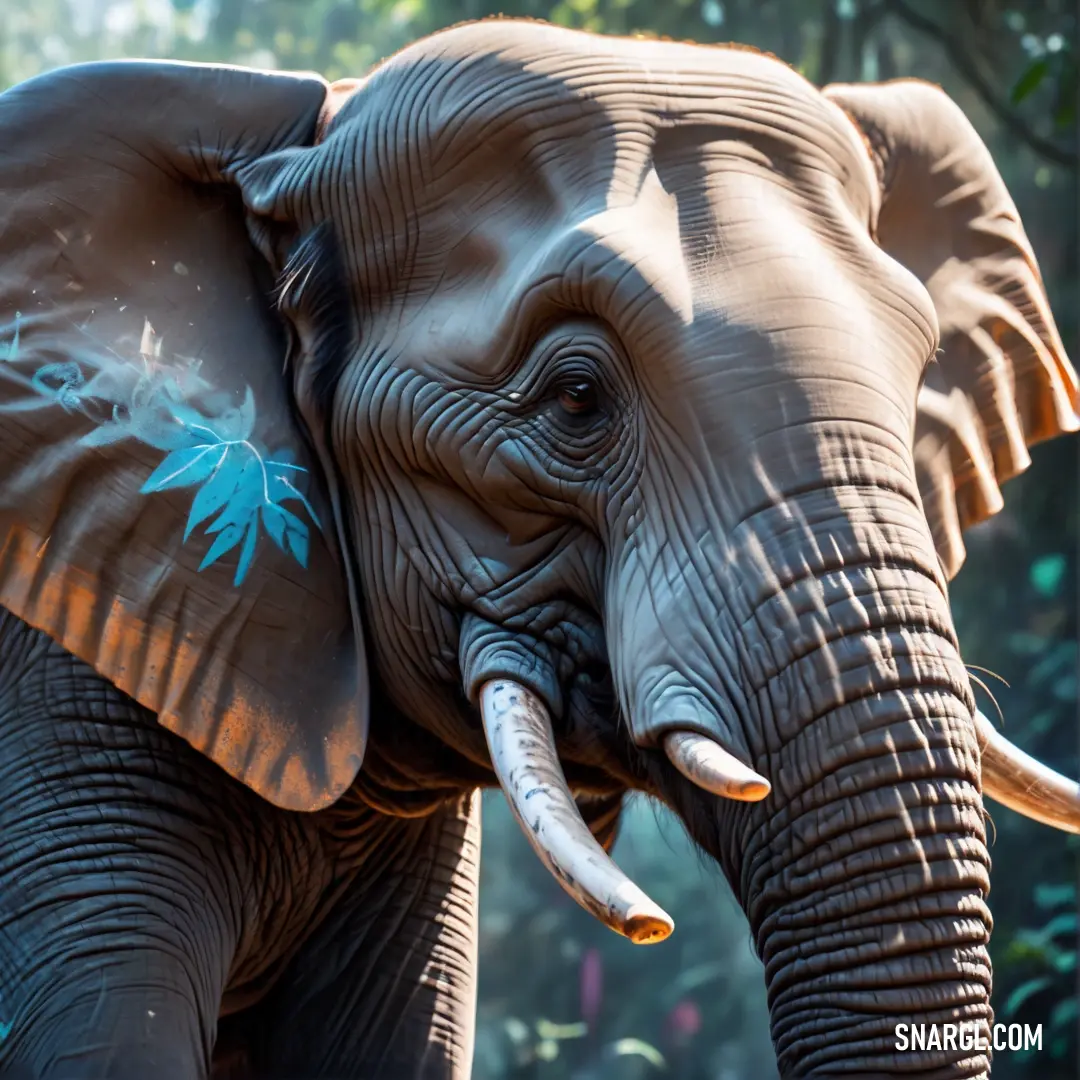
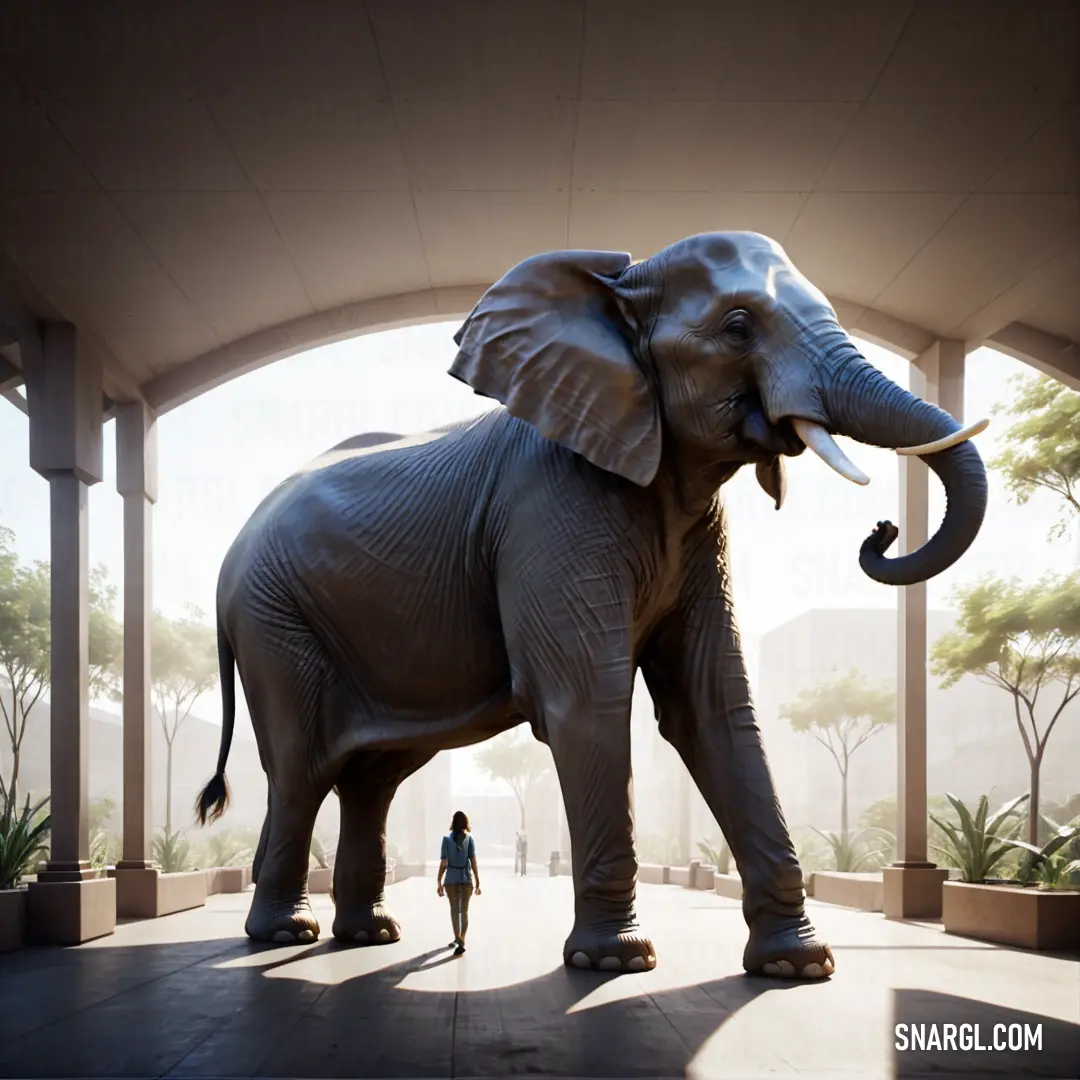
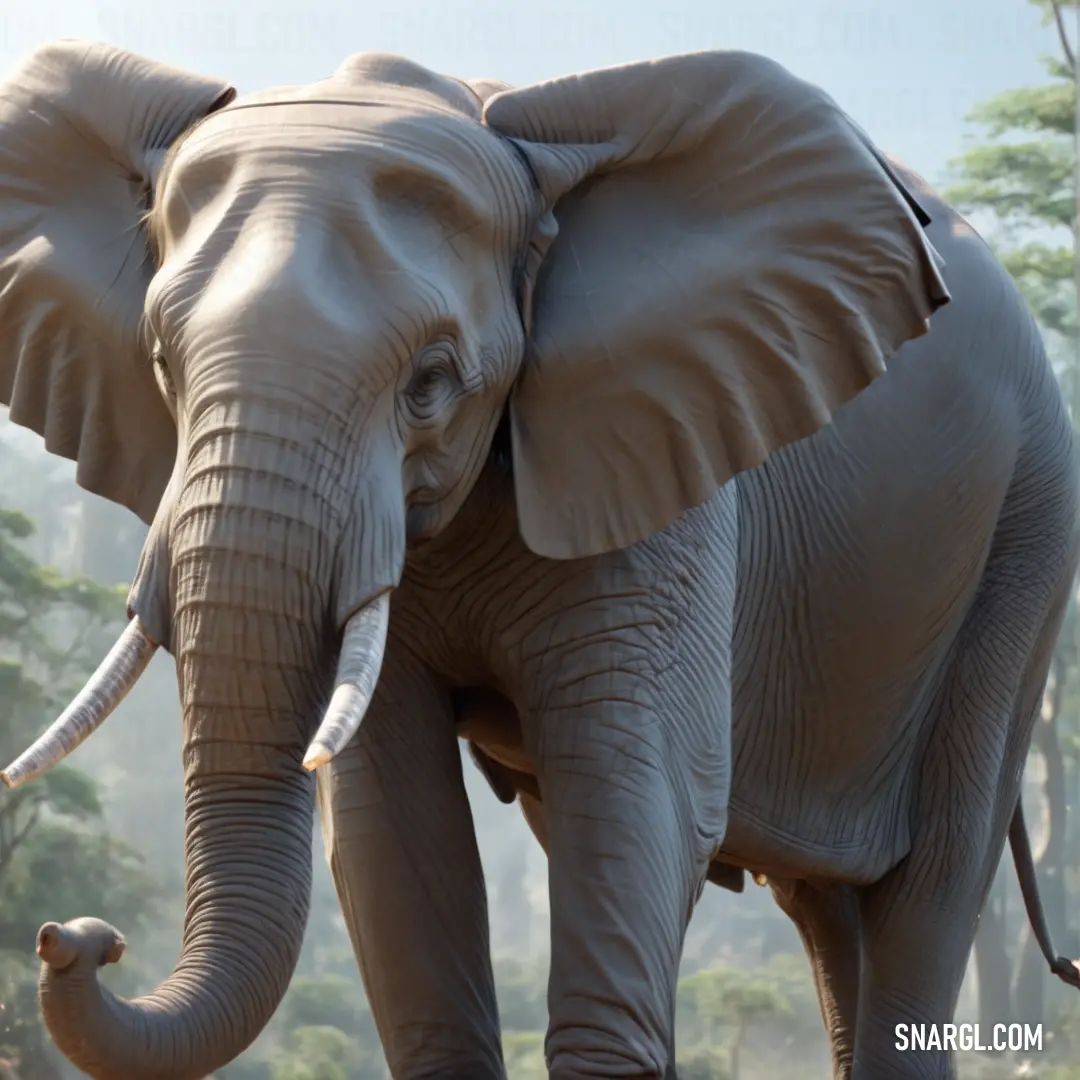
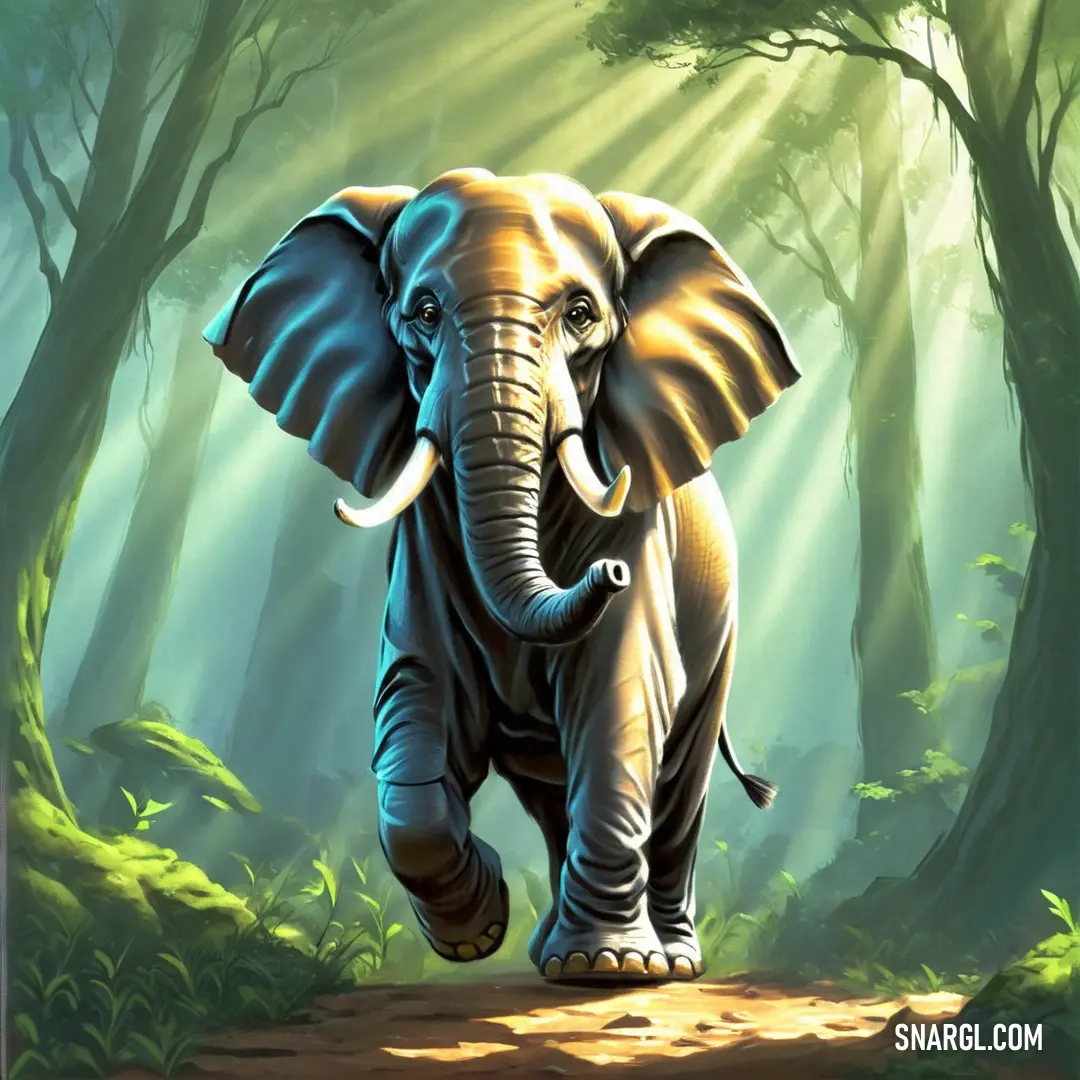
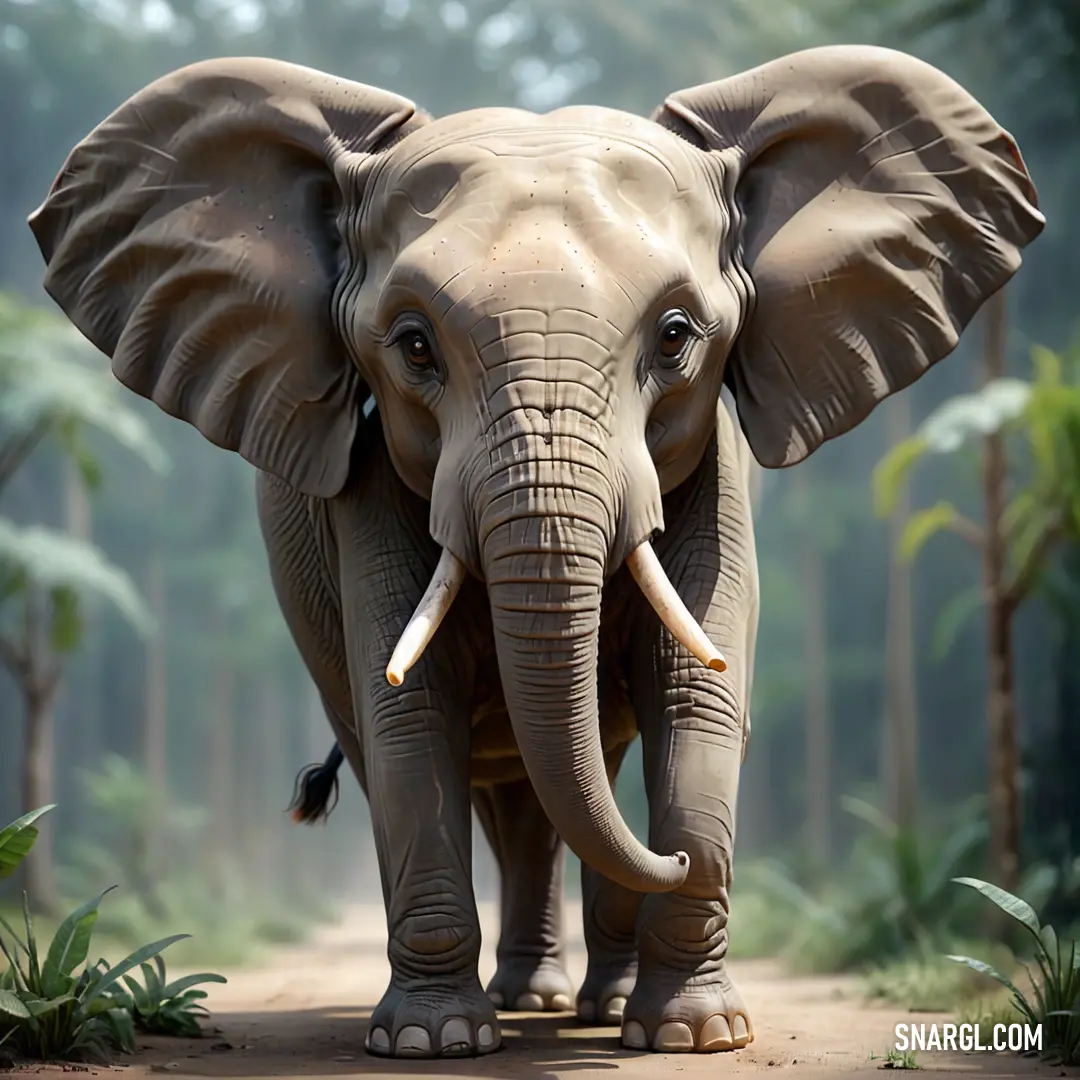
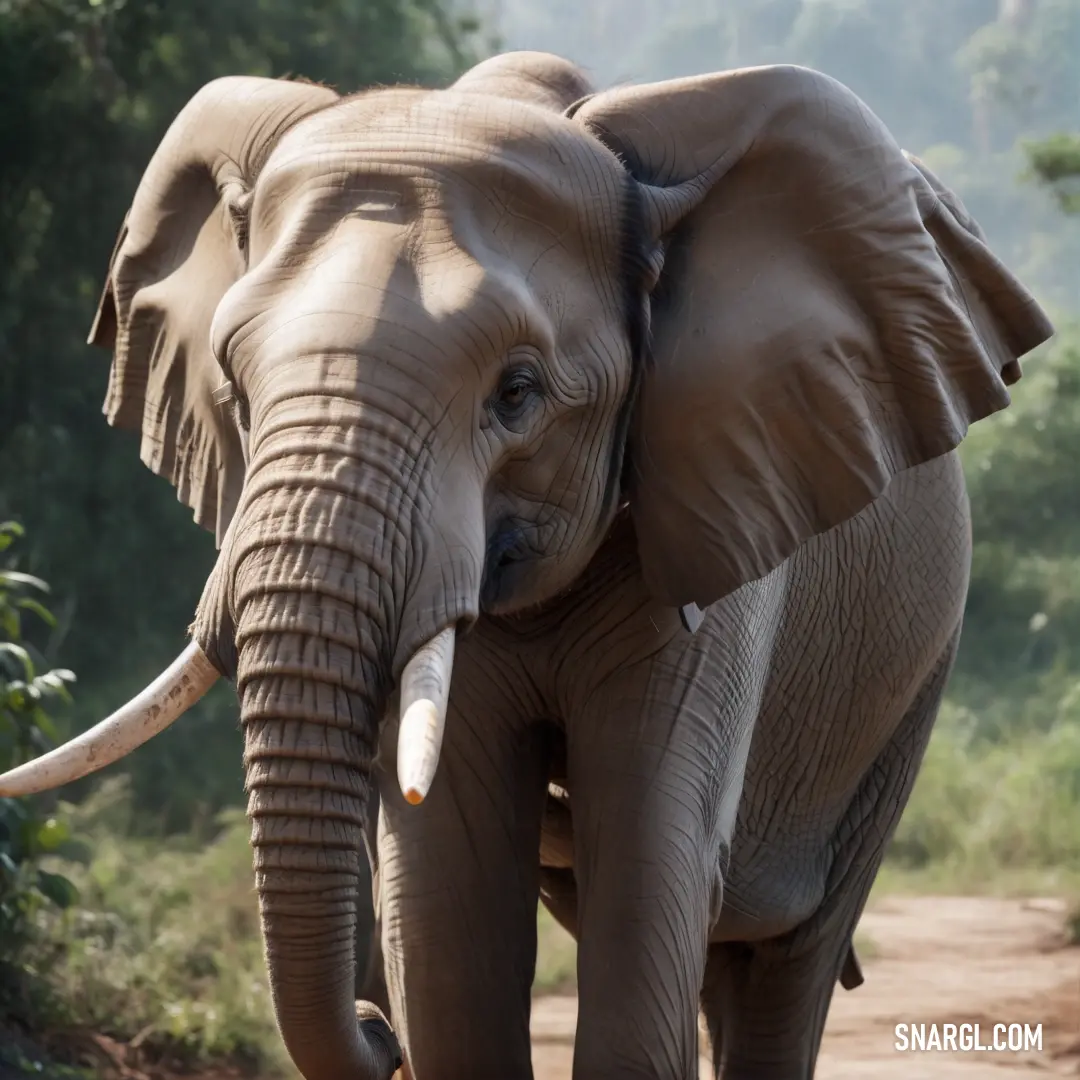
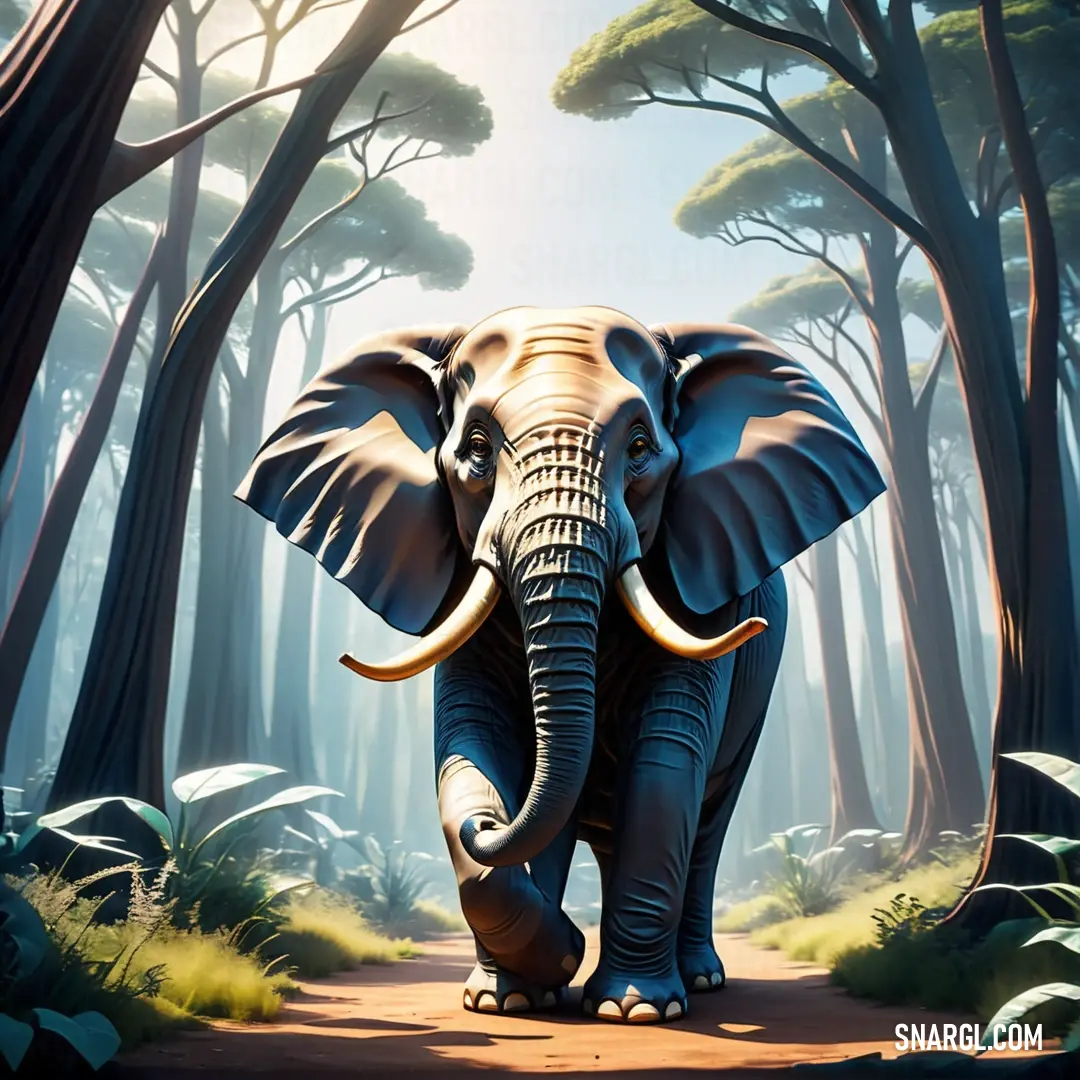
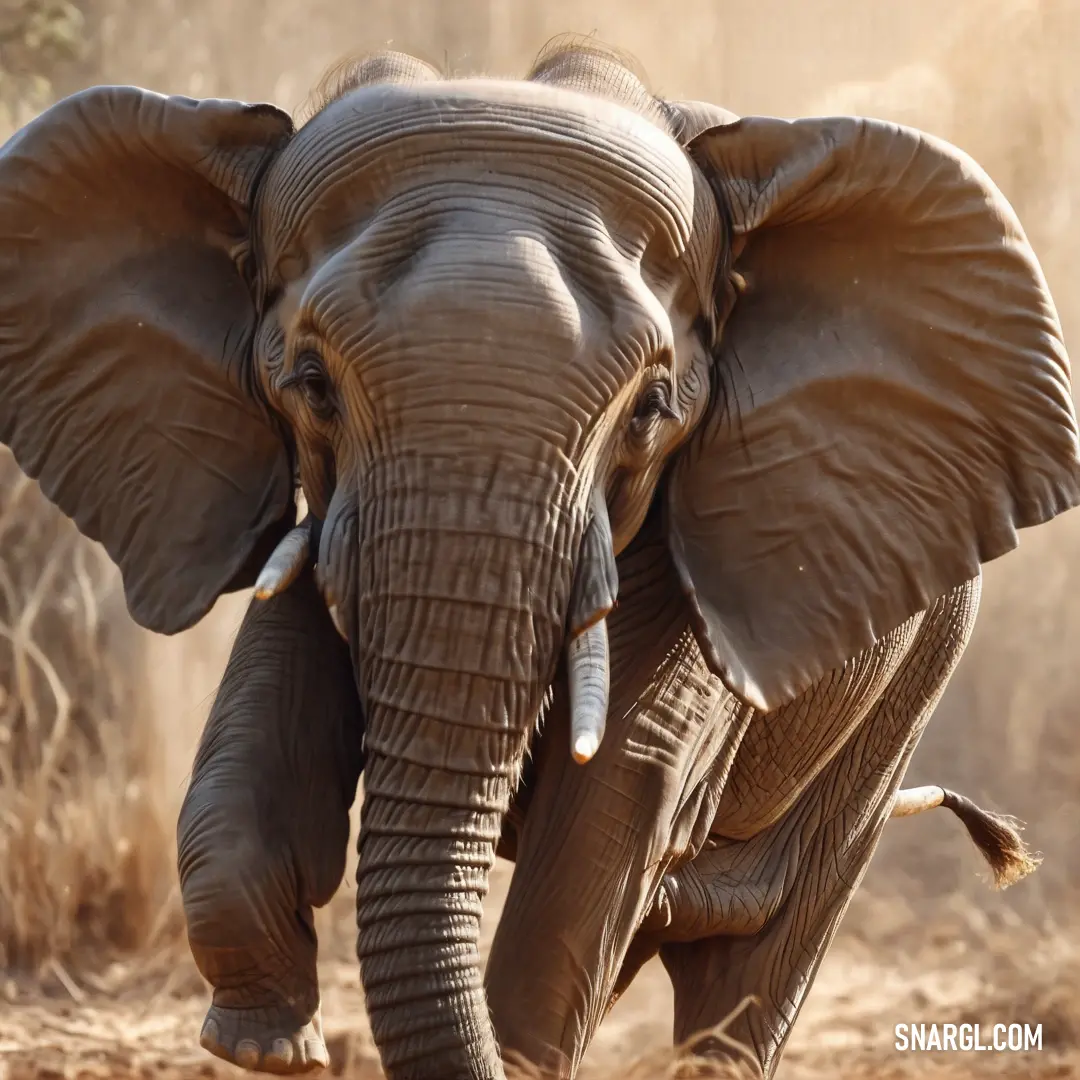
 Dark lava
Dark lava Cinereous
Cinereous Peach
Peach Burlywood
Burlywood







